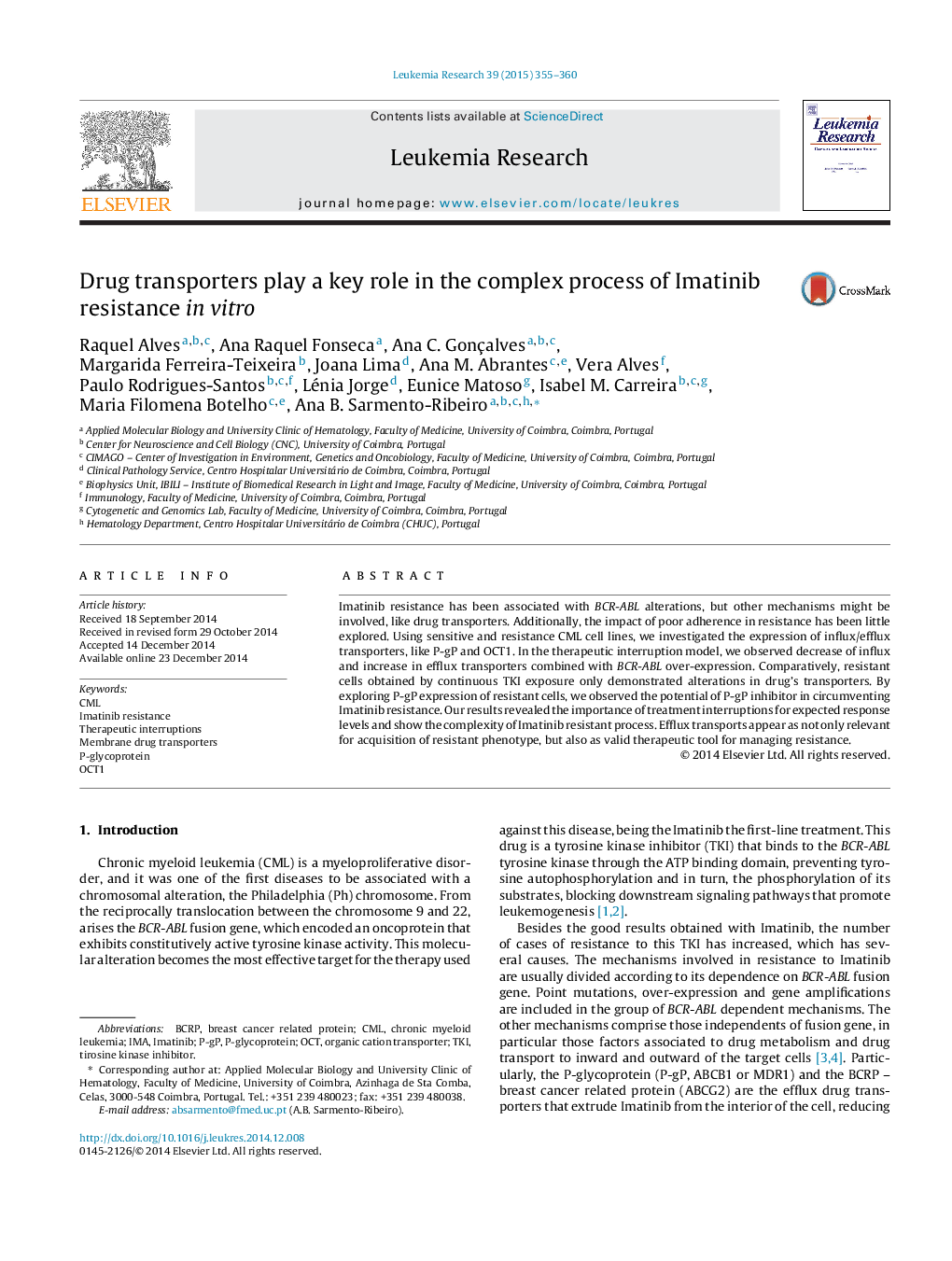| Article ID | Journal | Published Year | Pages | File Type |
|---|---|---|---|---|
| 2136691 | Leukemia Research | 2015 | 6 Pages |
•We establish the first Imatinib resistant cell line by discontinuous exposure.•This model elucidated the importance of treatment interruptions in resistance.•In both resistant models, efflux transporters were increased comparing to K562.•Influx transporters expression were diminished in both resistant cell lines.•Our results show the importance of ABC transporters as therapeutic targets.
Imatinib resistance has been associated with BCR-ABL alterations, but other mechanisms might be involved, like drug transporters. Additionally, the impact of poor adherence in resistance has been little explored. Using sensitive and resistance CML cell lines, we investigated the expression of influx/efflux transporters, like P-gP and OCT1. In the therapeutic interruption model, we observed decrease of influx and increase in efflux transporters combined with BCR-ABL over-expression. Comparatively, resistant cells obtained by continuous TKI exposure only demonstrated alterations in drug's transporters. By exploring P-gP expression of resistant cells, we observed the potential of P-gP inhibitor in circumventing Imatinib resistance. Our results revealed the importance of treatment interruptions for expected response levels and show the complexity of Imatinib resistant process. Efflux transports appear as not only relevant for acquisition of resistant phenotype, but also as valid therapeutic tool for managing resistance.
